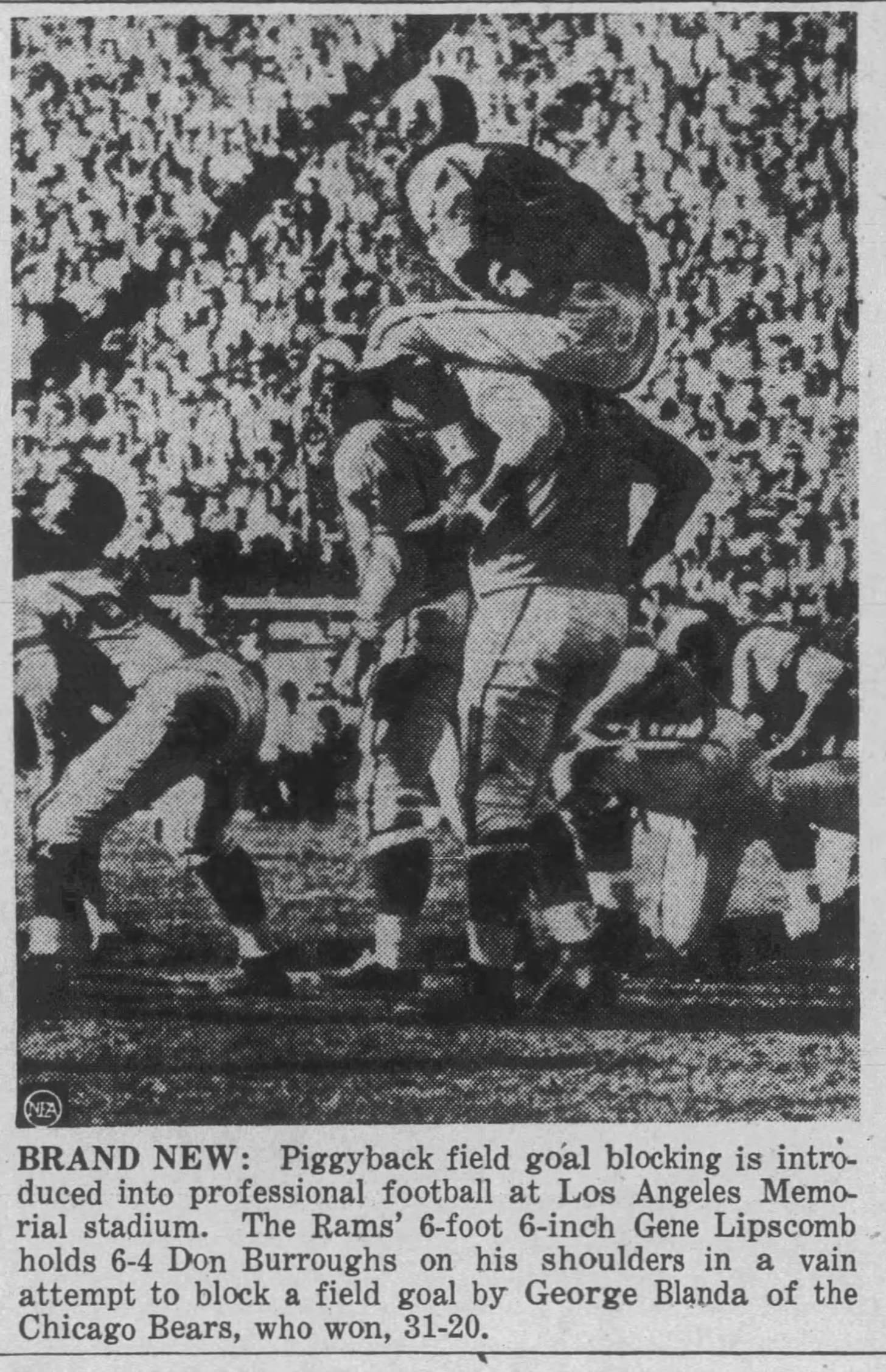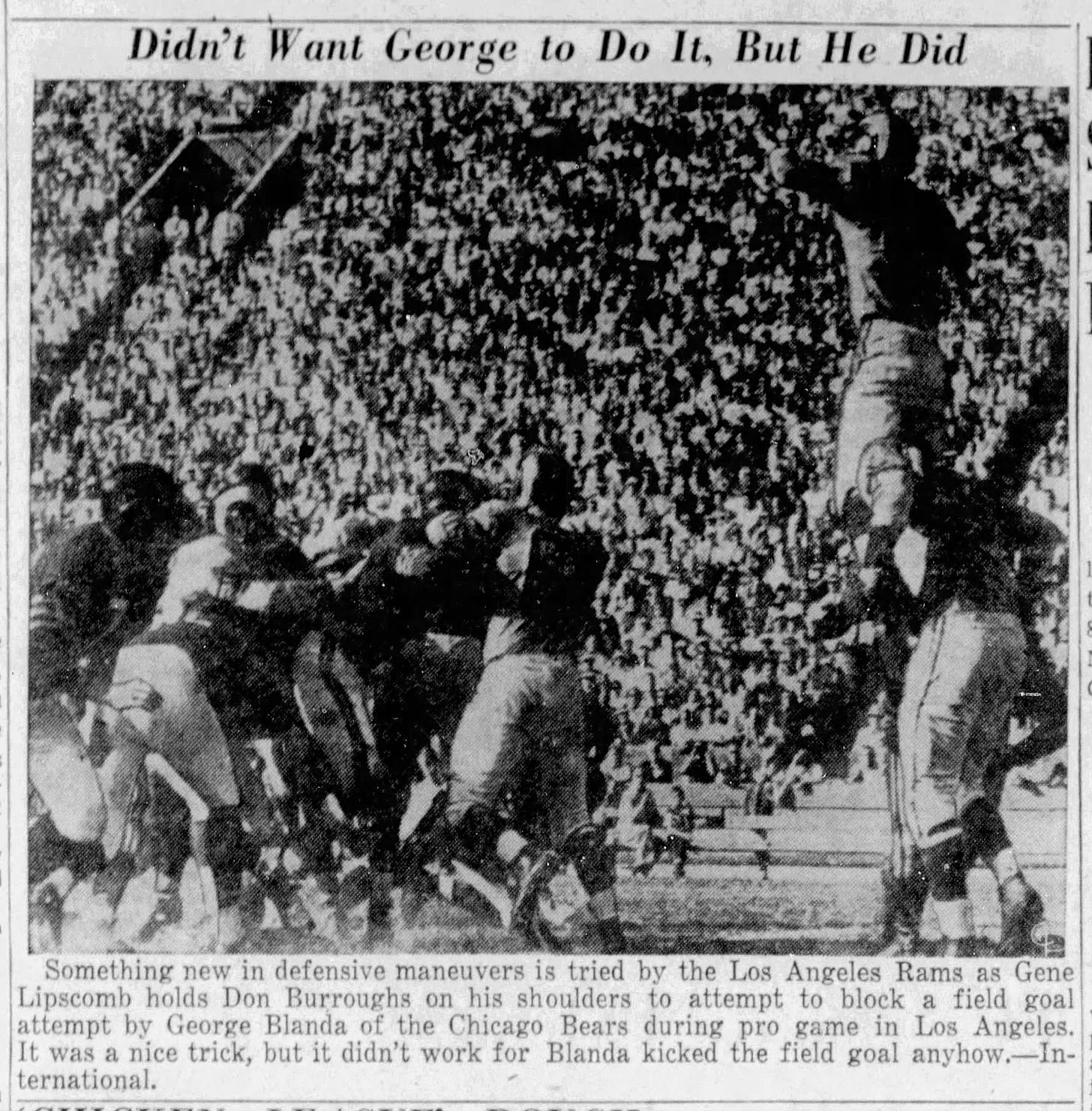Rerun: The Tower Play and Pyramid Defense
Yesterday, I received messages from several long-term subscribers asking whether I had ever written about particular topics or pointing out an interesting event in football history. The messages point to two issues. One is that Substack has a search function, accessible via the magnifying glass icon in the top banner, to check on whether I’ve covered a topic in the past.
Click on the magnifying glass, enter a term, and you’ll see whether the term has appeared in the site’s 1,350+ posts. I’m happy to address reader questions the old-fashioned way, but the search function makes things easier.
Of course, the search function works best if you know the appropriate term to enter. If you don’t know the terminology used for a particular feature of the game, the search function doesn’t help much. I run into this challenge all the time when searching for newspaper articles about old football issues. For example, it helps to know that early football pants were often called moleskins (because of the fabric) when looking for information on old football equipment. Likewise, it’s easy to search for scoop-and-score now, but that term did not exist for football’s first 110+ years, so the search process gets more complicated for events that occurred prior to 1990.
Second, few readers have read every article on this site, and those who have are likely not to remember them all. Since that is the case, I will start republishing some articles -think of them as reruns - though I’ll generally do so only when there is something to add to a topic that doesn’t warrant a new article.
One of yesterday’s queries came with the image immediately below, which shows Gene “Big Daddy Lipscomb” of the Los Angeles Rams holding teammate Don Burroughs on his shoulders while attempting to block a George Blanda field goal during a 1955 game. The caption refers to “piggyback field goal blocking,” a term that makes perfect sense, though I had not come across it before. Also, I was unaware that Lipscomb and Burroughs had used the tactic in the NFL.
Here’s the same play from two other perspectives.
In case you were wondering, Blanda made the kick and the Bears won 30-21.
Anyway, rather than write a new article about piggyback-style offensive and defensive plays, Today’s Tidbit is a rerun of a 2021 article that covered such plays and points to the fact that coaches and players are constantly innovating (or cheating) to find an edge, and some “innovations” are made illegal, leading to ever-expanding rule books.
To complete the loop, I’ll add a postscript to the original article with a link to this one as soon as it publishes.
Trick Plays: The Tower Play and Pyramid Defense
Amos Alonzo Stagg argued in 1927 that two themes dominated football's first sixty years. One was the game's gradual shift to valuing touchdowns more than field goals and extra points. (The point values set in 1883 awarded two points per touchdown, four for the kick after touchdown, and five per field goal.) The second theme was that players and coaches …
Football Archaeology is reader-supported. Click here to donate a couple of bucks, buy one of my books, or otherwise support the site.







